Repair after Crankshaft Wear

Generally speaking, the axle journal diameter is below 80mm, the crankshaft with the roundness and cylindricity error exceeds 0.025mm; or the axle journal diameter is above 80mm, the crankshaft with roundness and cylindricity error exceeds 0.0400mm, which all should be ground according to the specified size, or carry out vibration surfacing, chrome plating, iron plating and then grinding to the specified size or repair size.
1. Grinding of the crankshaft
Grinding of the crankshaft journal is based on crankshaft correction. In addition to the dimensional accuracy and surface roughness of the journal surface, the crankshaft grinding must meet the requirements of the geometrical tolerance: When grinding the crankshaft, the coaxiality of the axial line of the main journal and the connecting rod journal and the parallelism between the two axial lines must be ensured to limit the crank radius error and to ensure the accuracy of the angle between the connecting rod journal. Grinding of the crankshaft is usually carried out on a dedicated crankshaft grinder.
2. Grinding of the connecting rod journal
Due to the uneven wear of the connecting rod journal, two grinding methods are produced: eccentric grinding and concentric grinding.
The concentric grinding method is to keep the axial position of the connecting rod journal after grinding, that is, the crank radius and the distribution angle are unchanged. When the crankshaft of a diesel engine is ground, the concentric method is often used to keep the crank radius constant, and keep the compression ratio of the diesel engine constant, but the amount of grinding is large each time. Currently, during the life of the car, the number of overhauls is reduced, and the concentricity method can ensure that the engine performance remains unchanged.
The eccentric grinding method is to position the grinding according to the worn journal surface of the connecting rod, at this time, the center line position and the crank radius of the journal are changed.
Generally, the crank radius after grinding is larger than the original crank radius, so that the compression ratio is increased, and the cylinders are unevenly changed. At the same time, the mass center of the entire crankshaft is not on the centerline of the crankshaft main journal, causing the crankshaft to be unbalanced, resulting in additional dynamic loads during operation. Therefore, when the connecting rod journal is ground, the increase of the crank radius should be minimized to ensure that the coaxiality error of the shaft axis of the co-located connecting rod is not more than ±0.10mm, so as to ensure the balance in the crankshaft operation.
Related News
 May 7, 2019The clutch release bearing seal has a unique variable contact design. It allows for maximum speed under maximum load. It is resistant to wear, has a long life and minimizes noise and vibration. In add...view
May 7, 2019The clutch release bearing seal has a unique variable contact design. It allows for maximum speed under maximum load. It is resistant to wear, has a long life and minimizes noise and vibration. In add...view June 30, 2018A wheel bearing is a set of steel balls or tapered rollers held together by a metal ring called a race. They help wheels spin fast with as little friction as possible. They are used on all kinds of ve...view
June 30, 2018A wheel bearing is a set of steel balls or tapered rollers held together by a metal ring called a race. They help wheels spin fast with as little friction as possible. They are used on all kinds of ve...view May 7, 2019Each of the mainstream models on the market is divided into high and low levels, and the price naturally varies greatly. Sometimes, in order to make it cheap, the configuration can be tolerated. But f...view
May 7, 2019Each of the mainstream models on the market is divided into high and low levels, and the price naturally varies greatly. Sometimes, in order to make it cheap, the configuration can be tolerated. But f...view May 7, 2019The following takes the truck bearing as an example to introduce the bearing composition of each department. The bearings on the truck can be roughly divided into the powertrain part, the transmission...view
May 7, 2019The following takes the truck bearing as an example to introduce the bearing composition of each department. The bearings on the truck can be roughly divided into the powertrain part, the transmission...view May 15, 2019For set screws of automobile wheel hub assembly, it is believed that many people do not count them themselves because some cars have four, some cars have five. So the question is, what's the differenc...view
May 15, 2019For set screws of automobile wheel hub assembly, it is believed that many people do not count them themselves because some cars have four, some cars have five. So the question is, what's the differenc...view May 7, 2019When one of the four wheel bearings of the vehicle is damaged, you will hear a continuous hum in the car while driving. This sound is unclear where it came from. I feel that the entire car is full of ...view
May 7, 2019When one of the four wheel bearings of the vehicle is damaged, you will hear a continuous hum in the car while driving. This sound is unclear where it came from. I feel that the entire car is full of ...view

 Wheel Bearing
Wheel Bearing is a set of steel balls or rollers held together by a metal ring called a race. They help wheels spin fast with as little friction as possible. View More
Wheel Bearing
Wheel Bearing is a set of steel balls or rollers held together by a metal ring called a race. They help wheels spin fast with as little friction as possible. View More Wheel Bearing Kits
When you need to change the wheel hub bearing,you also need to replace many other parts at the same time,such as hub nut,bolt,seals,split pin,and so on. View More
Wheel Bearing Kits
When you need to change the wheel hub bearing,you also need to replace many other parts at the same time,such as hub nut,bolt,seals,split pin,and so on. View More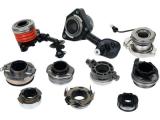 Clutch Release Bearing
Clutch Release Bearing is what presses down on the rotating spring plate or "pressure plate" to release the clutch disk. View More
Clutch Release Bearing
Clutch Release Bearing is what presses down on the rotating spring plate or "pressure plate" to release the clutch disk. View More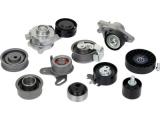 Belt Tensioner
A Drive Belt Tensioner is a pulley mounted to either a spring mechanism or to an adjustable pivot point that is used to keep constant tension on your serpentine belt. View More
Belt Tensioner
A Drive Belt Tensioner is a pulley mounted to either a spring mechanism or to an adjustable pivot point that is used to keep constant tension on your serpentine belt. View More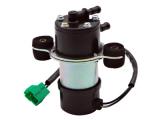 Fuel Pump
AiX provide you with the high quality of electric fuel pump and fuel pump assembly.Fuel pump assembly is one of the vital components of fuel injection system for EFI vehicle. View More
Fuel Pump
AiX provide you with the high quality of electric fuel pump and fuel pump assembly.Fuel pump assembly is one of the vital components of fuel injection system for EFI vehicle. View More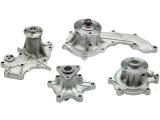 Water Pump
The reliable and effective operation of an automobile engine requires the cooperation of many parts. View More
Water Pump
The reliable and effective operation of an automobile engine requires the cooperation of many parts. View More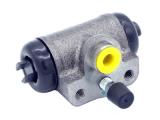 Wheel Brake Cylinder
When you want your car to slow down or stop, you need to take the brake operation. At this point, you need to step down your brake pedal. View More
Wheel Brake Cylinder
When you want your car to slow down or stop, you need to take the brake operation. At this point, you need to step down your brake pedal. View More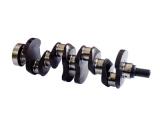 Crankshaft
Crankshaft is also known as crank.It is the important part of an engine to convert the up and down motion of the pistons into horizontal rotation.It is usually made by cast iron or forged steel. View More
Crankshaft
Crankshaft is also known as crank.It is the important part of an engine to convert the up and down motion of the pistons into horizontal rotation.It is usually made by cast iron or forged steel. View More VVT PHASER & OCV
VVT is the abbreviation of Variable Valve Timing. VVT PHASER is the vital component for the VVT engines. View More
VVT PHASER & OCV
VVT is the abbreviation of Variable Valve Timing. VVT PHASER is the vital component for the VVT engines. View More







 +86-18758057736
+86-18758057736 
 TEAM 21,XIEJIA VILLAGE, PUYANG TOWN, XIAOSHAN DISTRICT, Hangzhou, Zhejiang Province, China
TEAM 21,XIEJIA VILLAGE, PUYANG TOWN, XIAOSHAN DISTRICT, Hangzhou, Zhejiang Province, China 